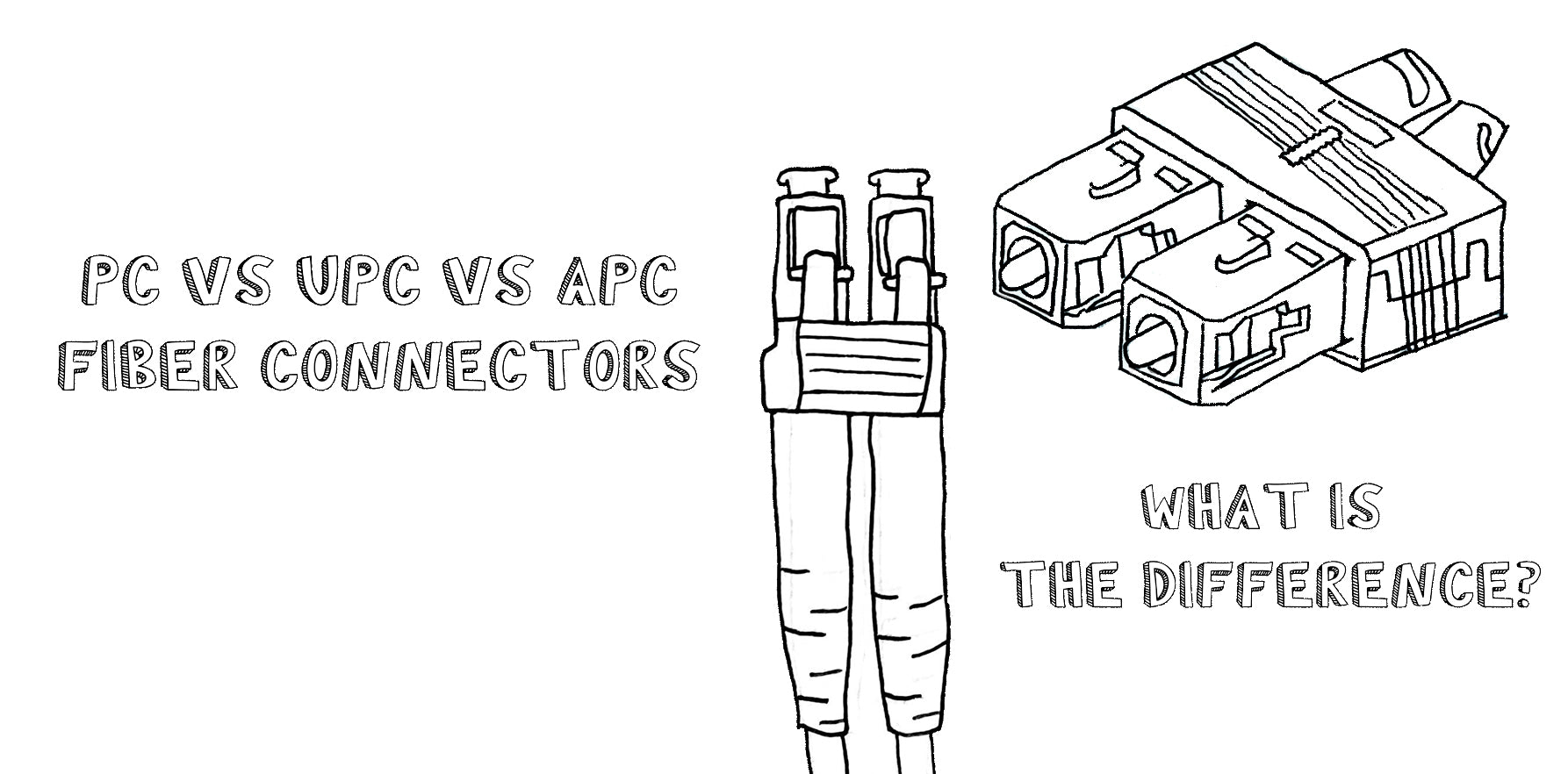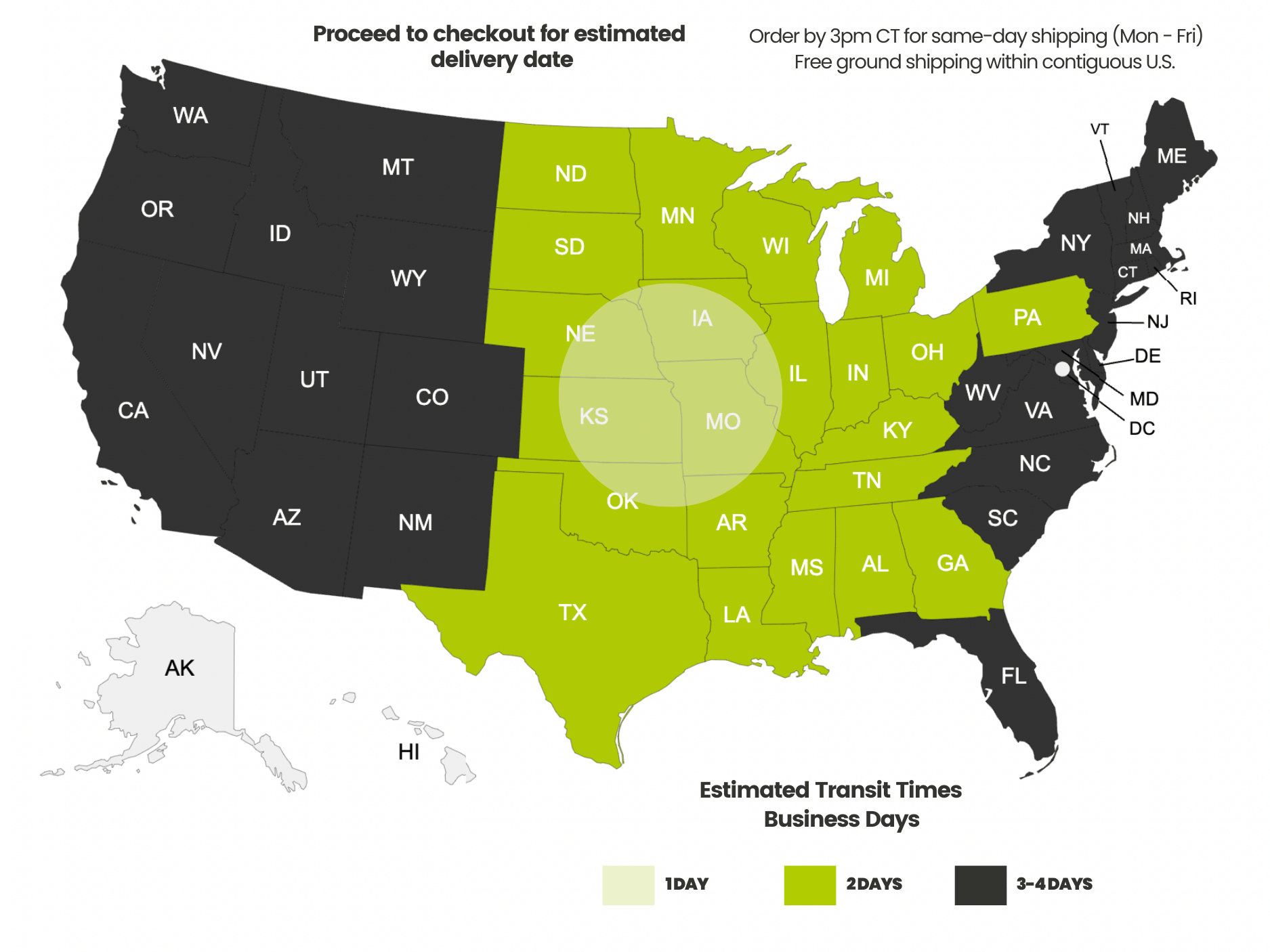Payment methods accepted

PC vs UPC vs APC Fiber Connectors – What is the Difference?
Written by Ben Hamlitsch, trueCABLE Technical and Product Innovation Manager RCDD, FOI
Have you wondered what the difference is between fiber optic connector polishes and when using one would be better than the other? Continue reading this article and I am sure we will answer your question. Often, the importance is put on selecting the fiber optic connector, “Do I need an LC, SC, ST, connector, etc.?” These are the most common questions one might focus on based on their fiber installation. But an often overlooked question is: “Which fiber connector polish should I use, and why would it make a difference?”
First, we will mention the three most common polish types. There are three main types of fiber connector polishes used in today’s fiber optic applications.

To put it simply, PC, UPC, and APC define the type of polish used on the fiber optic connector end face or ferrule. The connector end face or ferrule, is the housing for the exposed end of the fiber core and cladding. When one fiber connects to another fiber connector, transmitter, or receiver, it is important (depending on the application) to choose the right fiber connector polish.
We will get back to the 3 fiber connector polish types in more detail in the following sections. If you'd prefer to watch a video on this topic, you can also watch our video below where we go through the same information.
Why does it matter whether I use PC, UPC or APC?
One of the major differences is the amount of light that gets returned or reflected as the light travels between two mated connections, called reflection.
Reflectance (which is also called back reflectance or optical return loss) is the amount of light that is reflected back to the source from where it came. The light travels down the fiber cable and when it comes to the mated connection, between those two surfaces, there is what is called an air gap. This air gap, although tiny, can represent a meaningful loss of light signal at the mated connection.
However, this can vary depending on the type of polish used on the fiber connector. The higher the reflectance loss, which is measured as a negative value, the better the fiber connection. This reflectance loss improves as we go from PC to UPC and finally to APC.
Reflectance loss values for each connector polish type:

Let’s look at the 3 fiber connector polishes in more detail.
PC Physical Contact Connector:
PC, which stands for physical contact, is your most basic contact or surface polish on a fiber connector. It is the most common polish type that is found on OM1 and OM2 multimode fibers. PC fiber connectors were designed to overcome the air gap between two surfaces from small imperfections in the original flat fiber connector. The flat style fiber connectors are no longer used.
In PC fiber connector design, there is a slight cylindrical curve to the fiber end face with the intention to eliminate or improve the air gap. The typical return loss in single mode applications is about -30dB, which is much lower (better) than the reflectance of the original flat polish style, which is typically -14 dB.

UPC Ultra Physical Contact Connector
As we move from the PC polish connector, our next polish type is the UPC Polish. This polish type has become the most common. The LC-UPC, and SC-UPC connectors are the most common in today's fiber installations. Building on the convex end-face attributes of the PC but utilizing an extended polishing method creates an even finer fiber surface finish, which brings us the Ultra Physical Contact (UPC) connector. This results in a lower back reflection (ORL) or reflectance value than a standard PC connector, allowing for more reliable signals in digital TV, telephony, and data systems. In today’s market, UPC is the most common end face polish, covering most of the fiber optic application needs.
Most often, the poor performance found in a UPC connector is not caused by the design but rather by poor cleaving and polishing techniques. UPC connectors do have a low insertion loss, but the back reflection (ORL) will depend on the quality of the fiber cleave. Although most fiber connectors or pigtails are pre-polished from the factory, the fiber cleave to have the mechanical or fusion splice is very important to the performance of the connector in terms of return loss (reflection). Yet another factor is dependent on how many times the connector is repeatedly mated (disconnected and connected) from its connection point.

APC Angled Physical Contact Connector
And finally, we have the APC polish. This is the connector that commonly has the green fiber connector to indicate APC. This connector polish has the lowest back reflection and can sustain repeated connections without any significant return loss degradation to the connector performance.
PC and UC connectors are commonly used in most fiber applications, and these are sufficient for the majority of applications. However, in some cases, the application requires an extremely low return loss (reflectance), and this is where APC polish connections shine. This is because adding a small 8-degree angle to the end-face allows for an even tighter connection with even less air gap. Combined with that, any light that is redirected back towards the source is more easily reflected out into the fiber cladding, thanks to the 8-degree angled end-face.
However, APC connections are not without their limitations. The aforementioned PC and UPC polish connectors are all intermateable or interchangeable. That being said the performance of the connector is going to be based on the lowest performing connector in the mated connection. In that case the PC connector. Can you mix APC and UPC fiber connectors? Are APC and UPC interchangeable? No! This is not true with an APC polish connected to a UPC or PC polish connection. APC connectors must be mated with APC connectors, otherwise, there will be significant return loss, and insertion loss, causing failed test links and data loss.
APC connectors can often be found in applications such as DAS, FTTH, CCTV. APC connectors are also commonly used in passive optical applications (both GPONs and passive optical LANs) because many of these systems also use RF signals to deliver video. Future higher-speed passive optical networks and other WDM applications that will use higher wavelengths via singlemode fiber will also likely require the reduced return loss of APC connectors.
APC polish connections can only be found in singlemode fiber, so how can you tell the difference between singlemode UPC and singlemode APC? After all, the connector ferrules are extremely small and it is very hard to recognize whether they are angled or not. This is where the connector colors come into play.
If the connector body is blue, it’s a singlemode UPC connector, and if the connector body is green, it is a singlemode APC connector. It’s as simple as that!

The most common fiber end face polishes in today’s applications are UPC and APC. UPC is used in both multimode and singlemode, whereas APC is typically only used for singlemode, although there are some applications that are starting to use APC connectors in multiple applications.
In today’s high-speed networks, where quality fiber patch cords are essential to providing quality fiber alignment and durability, UPC polish fiber connectors over PC polish are the superior option.
Deciding whether to choose UPC or APC will depend on your needs. With applications that call for high precision optical fiber signaling, APC should be the first consideration, but less sensitive digital systems will perform equally well using UPC polish connectors.
HAPPY NETWORKING!
trueCABLE presents the information on our website, including the “Cable Academy” blog and live chat support, as a service to our customers and other visitors to our website subject to our website terms and conditions. While the information on this website is about data networking and electrical issues, it is not professional advice and any reliance on such material is at your own risk.



























